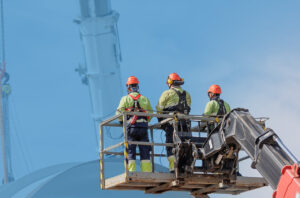Lone working is often an unavoidable feature of many sectors. Job examples can include delivery drivers, people who work away from a fixed base e.g. carrying out maintenance work or visiting clients in their homes, people who work from home, people who work in remote parts of occupied buildings and people who work outside of normal hours such as security guards.
As technology and the nature of work evolves, so does the type of lone working that is carried out. New hazards will always arise but there are precautions that can be put in place to minimise risk.
Hazards associated with lone working will depend on the type of work carried out and will be similar in many ways to the hazards associated with carrying out the same work alongside colleagues. However, lone workers may be at a greater risk of harm if they are not able to obtain help when things go wrong. They may also be at greater risk of experiencing work related violence.
It is important that employers assess the risks that all their employees are exposed to and take action to minimise and manage those risks.
The HSE have recently updated their guidance document INDG73 “Protecting lone workers; How to manage the risks of working alone”. This new version includes:
- a new section on how to protect lone workers from the risk of work-related violence
- more information on how managers should keep in touch with lone workers
- new advice on the impact lone working can have on stress, mental health and wellbeing.
The guidance can be downloaded from the HSE’s website at: https://www.hse.gov.uk/pubns/indg73.htm
Please speak to your normal PIB Risk Management contact or get in touch using [email protected] if you have any questions about managing the risks associated with lone working activities carried out by your employees.

New rules for providers of social housing in England

Small but mighty – working safely with nanomaterials

Do you have a MEWP rescue plan?

Changing the asbestos control regime

HSE Launch Motor Vehicle Paint Spraying Campaign
